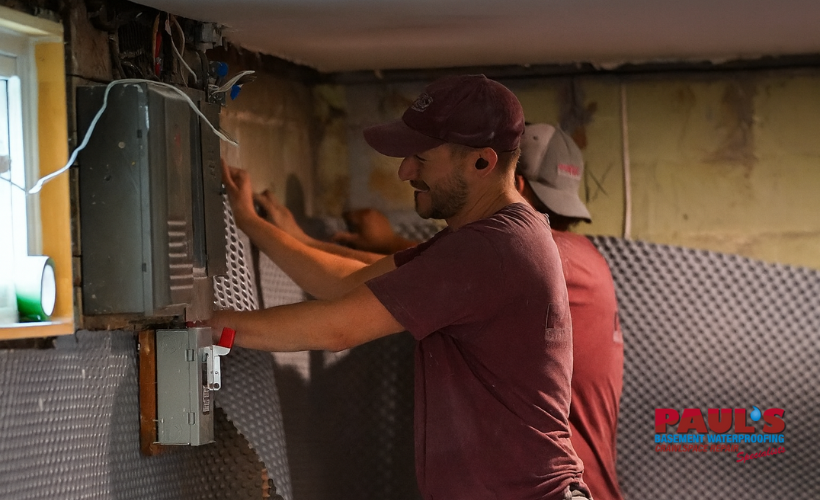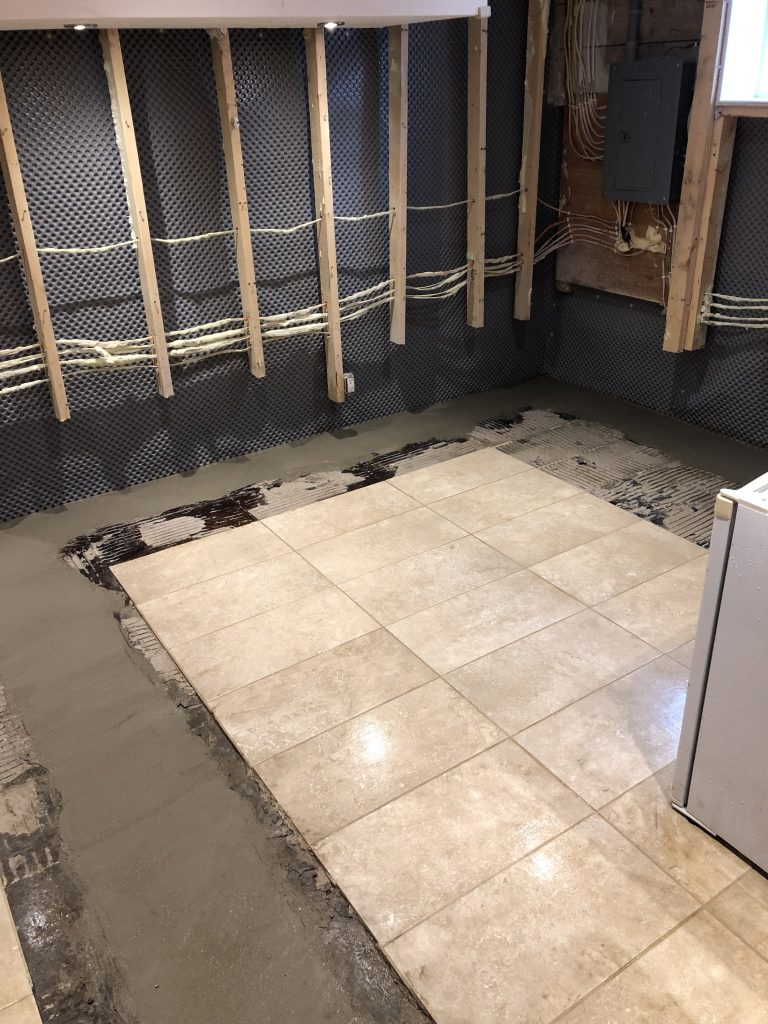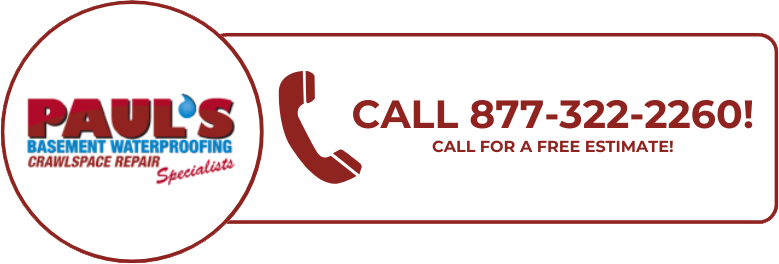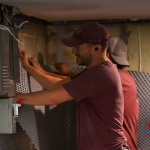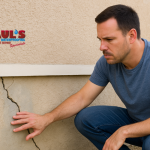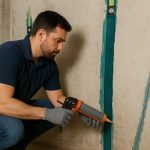Water damage threatens basements and foundations across Windsor, Essex County, and Chatham-Kent. This comprehensive guide explains different membrane types for structures from water damage. Waterproofing membranes are essential to help you make informed decisions about selecting the appropriate protection for homes susceptible to water infiltration and reduce the risk of damage that can prevent mold growth and structural problems leading to structural deterioration.
What Are Waterproofing Membranes?
Waterproofing membranes create barriers between your foundation and water. These protective layers prevent water penetration into basement walls and foundation surfaces. The right waterproofing membrane blocks moisture before it reaches your home, preventing mold growth and expensive repairs. Proper waterproofing can prevent costly repairs and also help maintain indoor air quality.
Two main types exist: sheet membranes and liquid-applied membranes. Sheet membranes come in rolls that installers attach to surfaces. Liquid-applied membranes start as coatings that cure to form seamless waterproofing solution barriers. Choosing effective waterproofing depends on your specific needs and budget constraints.
Types of Waterproofing Membranes
Sheet Membranes
Sheet membranes provide physical barriers against water. These waterproof membranes not only protect foundations but also prevent water damage to entire structures. Installers unroll these materials and attach them to foundation walls, basement exteriors, and roof surfaces for both commercial and residential applications.
Modified Bitumen Membranes
Modified bitumen mixes asphalt with rubber or plastic to create strong waterproof sheets. Foundation projects use this material because membranes are designed to withstand ground pressure and temperature changes. The sheets contain fiberglass or polyester for extra strength and protection against water infiltration.
Contractors apply modified bitumen with self-adhesive backing or heat. Self-adhesive versions make installation easier and safer. This membrane handles foundation movements without tearing. It works well for homes built on clay soils found throughout Essex County. These membranes like modified bitumen offer high-quality waterproofing that maintains waterproofing properties over time.
EPDM Rubber Membranes
EPDM rubber creates flexible, long-lasting waterproof barriers. This synthetic rubber resists sun damage, ozone, and temperature changes. The material stretches and shrinks with temperature without cracking. EPDM bends to fit irregular surfaces and foundation shapes, making it suitable for both commercial and residential flat roofs and large foundation projects.
PVC Membranes
PVC membranes offer strong waterproofing with welded seams. Heat welding joins PVC sheets together, creating continuous barriers without weak spots that could lead to water infiltration. Foundation contractors use PVC for below-grade waterproofing, roofs, and tunnels. The material resists chemicals and tough soil conditions, lasting for decades when installed correctly. The membrane must be properly sealed at all seams to prevent water infiltration and maintain the life of your waterproofing system.
Polyethylene Membranes
Polyethylene sheets protect wet areas like bathrooms and kitchens. Installers place these membranes in mortar to create strong bonds. The thin, flexible sheets fit floor slopes and drain shapes, working well under tile where water exposure happens regularly.
Liquid-Applied Membranes
Liquid-applied membranes start as coatings that cure into seamless waterproof barriers. These products have no seams and fit complex shapes.
Polyurethane Coatings
Polyurethane creates flexible waterproof coatings that handle movement and temperature changes. The coating flows into cracks, corners, and irregular surfaces that sheet membranes cannot easily cover. Multiple layers build stronger protection for foundation walls with pipes, complex details, and areas where sheet membranes need excessive cutting.
Cementitious Coatings
Cementitious waterproofing mixes cement, sand, and chemicals to create rigid barriers. This cement-based material provides wall waterproofing for basements and foundations because it bonds strongly to concrete and brick. The material becomes part of the wall rather than a separate layer.
This coating handles water pressure well. It works for below-ground applications where waterproofing is necessary. Cementitious products resist soil chemicals and maintain protection for many years. The coating cures to form a hard, durable surface. Paul’s Basement Waterproofing uses cementitious coatings for interior foundation projects throughout Windsor and Essex County. These membranes and sealants work together to prevent mold growth and structural damage.
Epoxy Coatings
Epoxy coatings provide chemical-resistant, strong waterproof barriers. These coatings create hard, durable surfaces that resist water, oils, and harsh chemicals. The coating forms a thick layer that bonds tightly to concrete and metal, maintaining protection under demanding conditions in industrial buildings and commercial properties.
Installation Guide for Waterproofing Membranes
Surface Preparation Steps
Surface preparation determines waterproofing success. Homes susceptible to water infiltration need proper preparation to avoid membrane failure and wasted money.
Cleaning Requirements
Remove all dirt, dust, and loose materials from surfaces before membrane application. Pressure washing removes stubborn dirt from foundation walls. Allow surfaces to dry completely because moisture prevents proper sticking. This reduces the risk of membrane failure.
Repair Work
Fix all cracks, holes, and damaged areas before applying waterproofing membranes. Use quality patching materials that match your surface. Fill foundation cracks with hydraulic cement or epoxy. Proper repairs prevent issues that could lead to structural problems later.
Surface Smoothing
Remove voids, gaps, and rough areas that might puncture sheet membranes or create thin spots in liquid coatings. Grind down high spots and fill low areas to prevent air pockets that trap moisture. Sealants can be used around edges to ensure complete protection.
Installing Sheet Membranes
Sheet membrane installation follows specific steps for complete water protection:
- Start at the lowest point and work upward
- Unroll membranes horizontally to stop water from running behind edges
- Overlap seams by 3-6 inches based on manufacturer instructions
- Attach membranes with adhesives, fasteners, or self-adhesive backing
- Press firmly with rollers to remove air pockets and wrinkles
- Pay special attention to corners, edges, and transition areas
Installing Liquid-Applied Membranes
Liquid membrane application requires attention to coverage and drying times:
- Apply primer coat to prepare surfaces
- Brush or roll first membrane coat per manufacturer instructions
- Place reinforcing tape in wet membrane at corners, joints, and cracks
- Allow drying time between coats (typically 2-4 hours)
- Apply additional coats to reach specified thickness
- Check coverage for thin spots or missed areas
Finishing and Sealing
Complete waterproofing requires attention to details:
- Seal all membrane edges with compatible sealants
- Waterproof pipe holes, electrical lines, and structural elements
- Apply edge strips at exposed membrane edges
- Allow complete drying (24+ hours) before backfilling or adding finishes
- Check for gaps, tears, or missed spots before covering membranes
Benefits of Professional Waterproofing Membrane Installation
Professional installation provides significant advantages over DIY attempts. Experienced contractors know which membrane types work for specific applications and understand proper surface preparation methods that ensure long-term performance and structural integrity.
Paul’s Basement Waterproofing brings years of experience serving homeowners throughout Windsor, Kingsville, Essex, Lakeshore, Leamington, Amherstburg, LaSalle, Chatham, Wallaceburg, Ridgetown, Blenheim, and Dresden. Our team understands local soil conditions and climate challenges affecting basement waterproofing in Essex County and Chatham-Kent.
Professional installation includes:
- Assessment of your waterproofing needs
- Selection of appropriate membrane types that must be compatible with your foundation
- Proper surface preparation and repair work
- Correct application techniques that vary significantly based on project requirements
- Quality checks throughout the process
- Warranty protection on materials and workmanship
Water damage from failed DIY waterproofing causes mold growth, structural problems, and foundation damage. Professional installation protects your home’s structural integrity.
Protect Your Home with Expert Membrane Installation
This Waterproofing Membrane Guide provides essential information about membrane types and installation processes. Successful waterproofing requires professional expertise. Foundation protection demands careful assessment, proper material selection, and skilled installation that creates lasting barriers against water.
Paul’s Basement Waterproofing offers complete waterproofing solutions for homeowners facing basement moisture problems, foundation leaks, and water damage concerns. Our experienced team evaluates your specific situation and recommends appropriate membrane systems that provide reliable, long-term protection.
Contact Paul’s Basement Waterproofing at 1-877-322-2260 for a complete assessment of your basement waterproofing needs. We serve Windsor, Essex County, and Chatham-Kent with proven waterproofing solutions that protect your home and preserve your property value. Visit our website at keepitdry.ca to learn more about our waterproofing services and foundation repair expertise.

